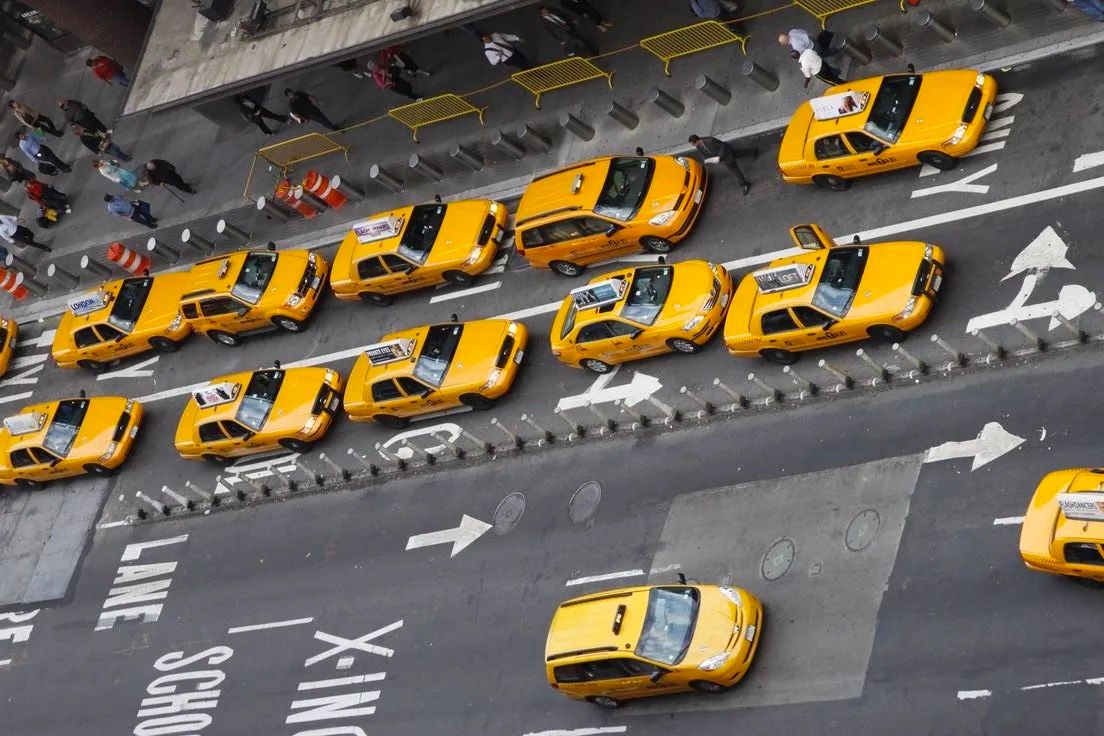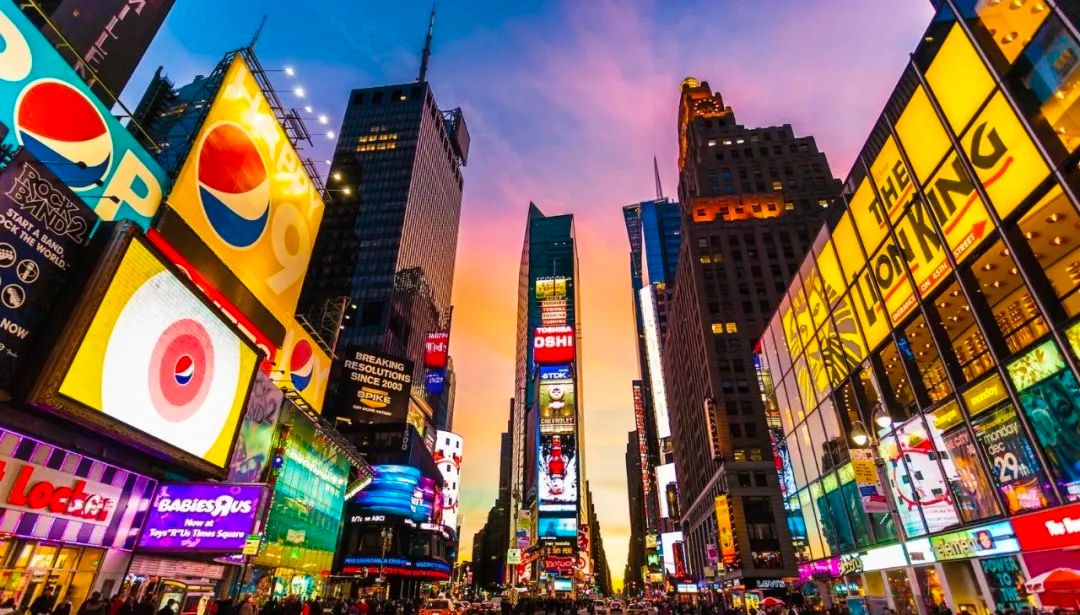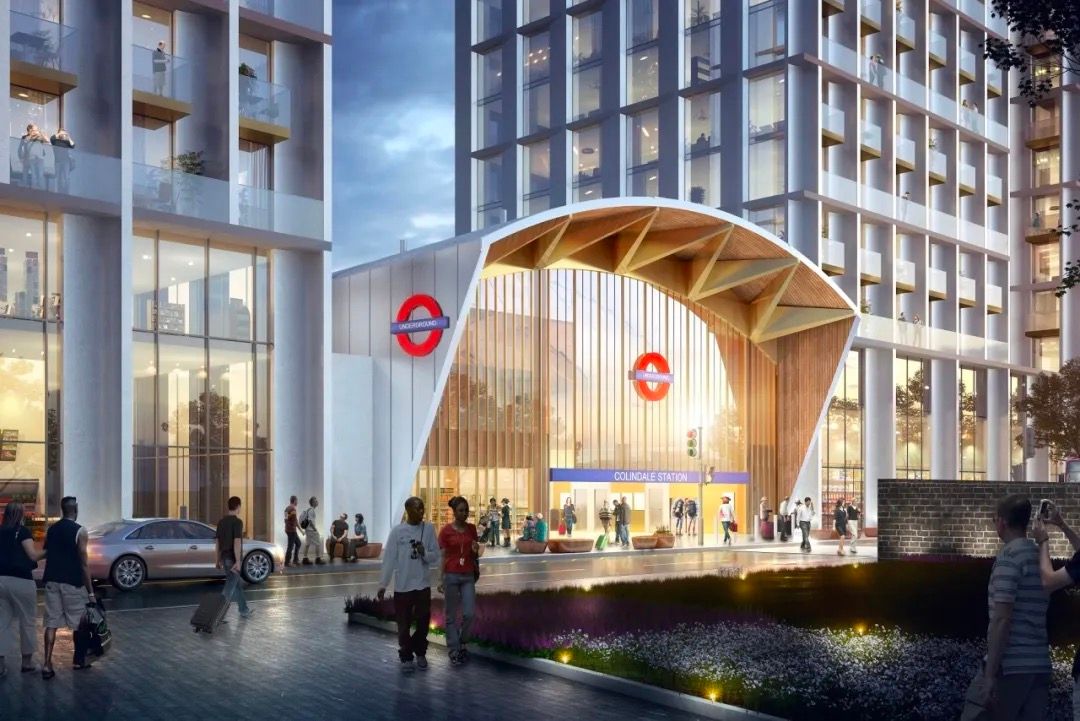A New Perspective on Urban Transport Design: From Congestion Charges in New York to Transport Upgrades in London
)
114 years ago, the United States began recording pedestrian safety data. In 2023, this metropolis of 8.5 million people saw only 101 deaths, marking the safest year on record. Undoubtedly, this achievement can be attributed to New York City's adoption of the "Vision Zero" policy in recent years, aiming for zero traffic fatalities. However, not everyone is applauding New York's transportation efforts.
Take the New York City subway, for example. Complaints about it are abundant. "While waiting for the subway, a live cockroach fell from the ceiling onto my arm. MTA should better maintain the stations!" expressed Vanessa from Brooklyn. Indeed, the 120-year-old subway system requires upgrades to its infrastructure, such as improving accessibility facilities, lighting, signage, and adding public restrooms. However, the challenges facing the Metropolitan Transportation Authority (MTA) go beyond these.
At the end of March this year, after a crucial vote, the MTA officially passed the congestion pricing plan in New York City, sparking controversy. Although New York City is the first in the United States to implement congestion charges, it's not the first globally. Singapore, for example, implemented congestion charges during peak hours in the 1970s, while in 2003, Transport for London (TfL) introduced the "Congestion Charge" for vehicles entering the central area of the city during certain hours. In 2019, London also introduced the Ultra Low Emission Zone (ULEZ) to charge vehicles that didn't meet emission standards. Whether congestion charges will improve New York's traffic remains to be seen.
Today, major cities globally face increasingly severe issues of traffic congestion and environmental pollution. Both the MTA in New York City and Transport for London seem to have endless tasks at hand. By delving into the transportation transformations and renovations in these two cities, we can explore the relationship between urban renewal and transportation planning from different perspectives, offering new ideas and insights for global cities in their transportation design strategies.
How Will Congestion Charges Benefit New York's Transportation Network?
This June, New York City is set to implement a congestion pricing plan aimed at addressing long-standing traffic congestion and pollution issues. Specifically, starting from June, private passenger vehicles will need to pay $15 per day to enter the Manhattan Central Business District (south of 60th Street) from 5 am to 9 pm on weekdays and from 9 am to 9 pm on weekends. Other types of motor vehicles will have varying fees. For instance, small trucks will be charged $24, while large trucks will pay $36. Although taxis are exempt from the $15 daily fee, taxi, Uber, Lyft, and similar service vehicles will have to pay an additional $1.25 to $2.5 surcharge per trip into the congestion zone (calculated based on the number of trips entering the congested area).

Additionally, there will be vehicles exempted from the charges, such as yellow school buses, most commuter buses, and a large number of government vehicles. While residents within the charging zone will be required to pay the congestion fee, those earning less than $60,000 annually will receive state tax credits to offset the charge.
The plan has elicited mixed reactions. While the congestion pricing plan aims to improve traffic conditions and enhance urban sustainability, it has also raised opposition and concerns from community residents.
Some commuters fear increased costs of entering Manhattan, and taxi drivers worry about losing more customers. For residents living within the charging zone, paying the congestion fee will further burden their cost of living, prompting some to consider leaving New York City for more affordable lifestyles.
So, how will congestion charges benefit New York's transportation? It is estimated that congestion pricing will generate $1 billion in new revenue annually, which will be handed over to the Metropolitan Transportation Authority to improve public transportation networks. According to New York State Comptroller Thomas DiNapoli, the city's public transportation system requires approximately $43 billion for capital repairs over the next five years, with an additional $15 billion expected over the next 20 years to replace over 3,900 subway cars. Data from 2022 already showed that by 2025, the MTA would face a $2.6 billion operating cost gap, potentially leading to a sharp increase in fares for commuters. In November last year, only about 52% of people expressed satisfaction with the New York City subway. Thus, while congestion charges may serve as discretionary funds for the MTA, improving transportation remains a daunting task.
However, there is also good news. For example, in 2023, the average on-time performance of the New York City subway on weekdays was 82.9%, the highest recorded in over a decade, and the newly introduced R211T open gangway trains in February received widespread acclaim. Government officials hope that once New Yorkers witness the actual effects of this plan, they will be convinced of its benefits. Some supporters also believe that congestion pricing will help reduce traffic congestion and pollution, ultimately improving the transportation system.
Transforming Commercial Districts to Ensure Pedestrian Safety
"This city must change, as the number of pedestrians on the streets has clearly surpassed that of drivers."
In August 2023, when New York City Mayor Eric Adams announced the "Broadway Vision" plan, he said so. The plan aims to transform Broadway into a safe and relaxing public transit space. Broadway refers to dozens of theaters within a dozen blocks near Times Square in New York City, with the heart of it near 42nd Street Times Square.
According to the plan by the New York City Department of Transportation, Broadway is being transformed into a "shared street," complete with new plazas and more bike lanes. It's worth mentioning that this street, also known as the "Great White Way" due to its brilliant lights at night, will soon become a pedestrian and cycling lane. The Department of Transportation's press release states that the transformation of "Broadway Vision" prioritizes the needs of pedestrians and cyclists over vehicles, thereby not only reducing the area's reliance on cars but also creating a safer and more sustainable traffic environment.
Historically, pedestrians were not the primary concern of commercial district owners. In the 1970s and 1980s, to maintain the prosperity of the retail industry, owners incurred high costs for street cleaning, landscaping, and marketing, as well as building streets and parking facilities conducive to car travel for tourists' convenience. However, with the transformation of the retail industry and the widespread adoption of remote work during the pandemic era, the balance of urban beautification began to shift towards pedestrians and cycling lanes.
This spring, the construction of "Broadway Vision" is still ongoing. The New York City Department of Transportation will further pedestrianize four blocks near Union Square. Although this vision may not be directly related to the memories of "theatre and prosperity," the heartwarming scenes of modern commuting life enacted on Broadway every day might be more vivid and charming urban dramas, aren't they?

Comprehensive Transport Updates in London to Meet Urban Future Needs
Also in August last year, London Mayor and Chair of Transport for London Sadiq Khan's deputy Seb Dance stated that there is a need for more public transport between outer and central London. Other officials have also indicated that "this is crucial to ensuring residents can lead a 'car-free lifestyle,' as the goal of the authorities is to reduce emissions."
"Car-free" might be the ultimate answer to addressing traffic congestion, but for Transport for London, ongoing public transport improvements remain a long-term priority.
Financially, Transport for London seems to be managing well. Last December, two stations in London, Colindale and Leyton, received £43.1 million in funding for large-scale renovations. The renovations include additional subway turnstiles, new ticket halls, and the installation of elevators for accessibility. Colindale Station will also see the construction of new residential and commercial developments on the site of the old ticket hall. These renovations not only focus on passenger comfort but also consider future urban development plans.

In addition, the London Underground system will undergo a series of upgrade projects. For example, as part of a £2.9 billion upgrade program, the Piccadilly Line is awaiting the introduction of new trains in 2025, with 53 stations on the line set to close later this year for upgrade work. "The first batch of trains is undergoing track and extreme weather testing," Transport for London recently announced. It is understood that the new trains will bring a more modern and comfortable riding experience, with improvements including air conditioning systems, replacement of electronic digital displays and monitoring systems, among others. Additionally, considering the anticipated increase in passenger traffic, Transport for London also plans to increase the frequency of Piccadilly Line services by 2027.
In addition to the Piccadilly Line, other subway lines are also undergoing upgrade projects. For example, £500 million will be used to refurbish the interiors of Central Line trains (installation of surveillance cameras, electronic screens, new seats, improved energy consumption, etc.) to extend the lifespan of the vehicles and replace them with new air-conditioned trains by 2030.
The renovation of Waterloo Station in London is not limited to its underground infrastructure. As early as 2020, Waterloo Station underwent a visual and functional upgrade. The newly added warm-toned wooden benches and colorful tables added commuting fun, and many tables are equipped with wireless charging functions. According to the "15-year Major Renovation Plan" announced in March this year, in addition to increasing the lobby area by 40%, London Waterloo Station will also build an area at the new entrance to park 5,000 bicycles outdoors, while the outdoors will be transformed into a 1,900-square-meter jungle green space. Walking and cycling routes to the station will also be improved. The renovation project at Waterloo Station is expected to create up to 10,000 jobs.
Transportation system upgrades also extend to above-ground visuals. To help passengers navigate maps more easily, the map of London Overground will be covered in new colors—six lines will be indicated with new names and colors. The names of these lines represent the areas they pass through, reflecting London's history and cultural diversity. For example, the yellow Lioness line is named in honor of the achievements of the English Lionesses (the British women's football team), while the Weaver line passes through an area known for its textile trade, in addition to passing through the hometown of British arts and crafts pioneer William Morris. Using chestnut-colored parallel lines to commemorate the charm of textile craftsmanship and artistic creation.
As London's transportation system undergoes comprehensive updates, the city is preparing for the future. From underground to above-ground, from infrastructure to visual experiences, a series of renovation projects is underway to meet the city's growing needs and development plans. These projects not only focus on passenger comfort and convenience but also emphasize the expression of historical heritage and cultural diversity. Whether through new visual designs, facility upgrades, service improvements, or route optimization, attracting passenger flow remains a key constant for the future urban transportation network.

